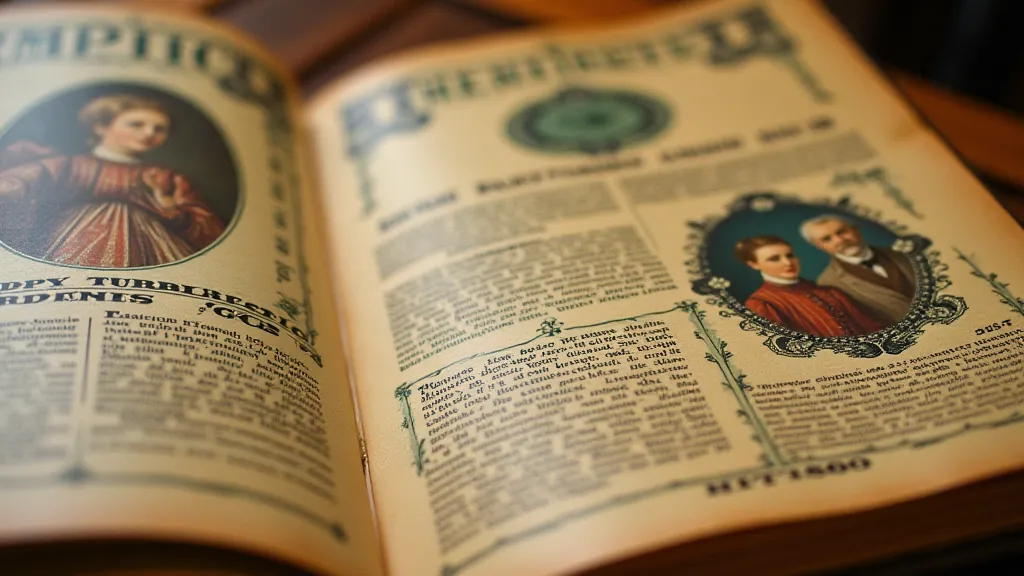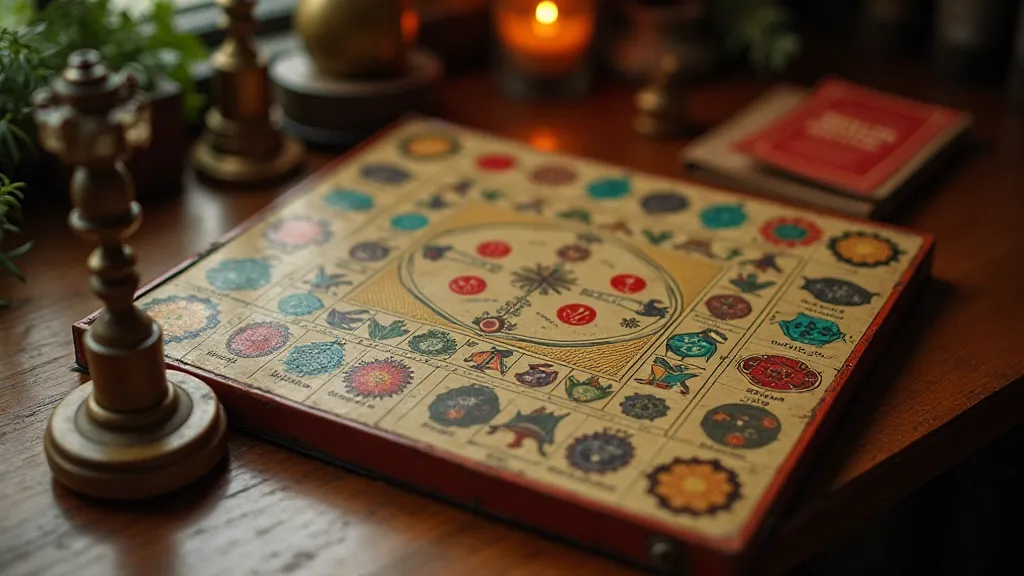The Silent Narrative: Decoding the Hidden Meanings in Vintage Game Instructions
The scent of aging cardboard, the whisper of brittle paper… these are the sensations that draw me, and countless others, to the world of vintage board games. It’s more than just the thrill of ownership; it's a connection to a bygone era, a peek into the lives and attitudes of those who came before. But beyond the beautiful boxes and intricate game pieces, there's another layer, often overlooked: the game instructions. We typically see them as purely functional – a set of rules to be followed. But what if they’re something more? What if they're a silent narrative, revealing societal expectations, advertising strategies, and unspoken assumptions of the time?
My own fascination began with a battered copy of "The Mansion of Happiness," published in 1843. Found in a dusty antique shop, its vibrant (though faded) cover depicted a charming family happily navigating a labyrinthine path. The game itself, unlike modern fare, wasn't about winning; it was about moral improvement. Players advanced by performing virtuous acts, and backslid by indulging in vices. The instructions, penned in elaborate Victorian prose, weren't just telling you how to play; they were imparting a lesson in proper conduct. It felt profoundly personal, like reading a letter from a distant ancestor imparting their wisdom.

The Language of Propriety: Gender Roles and Social Expectations
Examining vintage game instructions across different decades reveals a fascinating, and sometimes uncomfortable, reflection of societal norms. Early 20th-century games, for example, often rigidly defined gender roles. Young ladies were expected to be demure and helpful, while young gentlemen were encouraged to be adventurous and assertive. These weren’t merely suggestions; they were often woven into the game’s narrative. Think of the early editions of "The Game of Life." While ostensibly about navigating adulthood, the subtle messaging reinforced traditional paths for men (career, financial success) and women (domesticity, motherhood). This subtle encoding of societal expectations extended to the very design and presentation of the games, impacting everything from the artwork to the carefully chosen fonts. The entire package, rules and all, acted as a cultural primer.
The instructions themselves were often crafted with a particular audience in mind. Games aimed at children often used simpler language and more playful illustrations. Games intended for adults, particularly those marketed towards a wealthier demographic, employed more sophisticated prose and intricate rules. The very tone of the instructions – the level of formality, the use of humor, the implied authority – served as a form of subtle marketing. The careful design of these games, with its intricate rules and aesthetic choices, also speaks to an era when the creation of playthings was a craft worthy of considerable artistry, a far cry from the mass-produced games of today.
Advertising in Disguise: Hidden Sales Pitches
It’s a common misconception that vintage game instructions were solely dedicated to outlining gameplay. Look closer, and you’re likely to find cleverly disguised advertisements. Product endorsements weren't always blatant; they were often integrated into the narrative. A game might subtly promote a specific brand of automobile, a particular style of clothing, or even a certain type of food. The seemingly innocent act of playing a game became a vehicle for subtly influencing consumer behavior. This was particularly effective because the “advertising” was delivered in a context of enjoyment and engagement, making it far more palatable than a direct commercial. Interestingly, the rise of these subtle promotional techniques aligns with a broader shift in marketing strategies throughout the early 20th century – a move away from overt sales pitches and toward more sophisticated, immersive branding.
Consider the early editions of games like “Tiddlywinks.” While ostensibly a game of skill and chance, the instructions often contained subtle references to the quality of the marbles themselves, emphasizing their superior craftsmanship and luxurious feel. This wasn’t merely about gameplay; it was about associating the game with a sense of refinement and exclusivity. Sometimes, these games themselves represent a fascinating intersection of design, technology, and the evolving landscape of leisure. The history of these games is deeply intertwined with the rise of complex machinery, and understanding their design can often provide valuable insights into the broader history of technological innovation; a connection hinted at by discussions of other antique games with intricate mechanical components, as explored elsewhere. The meticulous planning and construction evident in some antique games mirrors the principles of complex systems, prompting reflection on the ingenious mechanisms and clever design solutions that defined a bygone era.
The Craftsmanship of Language: An Art Form in Decline
Beyond the content, there's a beauty in the sheer craftsmanship of the language used in many vintage game instructions. The prose is often more eloquent, more descriptive, and more imaginative than what we find in modern rulebooks. This wasn’t simply a matter of good writing; it reflected a time when literacy was highly valued, and attention to detail was paramount. The instructions were often written by professional copywriters, and they treated their task with a level of artistry that is rarely seen today. The careful selection of vocabulary and sentence structure was part of a broader cultural emphasis on precision and elegance in written communication, a contrast to the more informal and conversational style that prevails today.

The typography, too, was often carefully chosen to evoke a specific mood or aesthetic. Elaborate Victorian fonts, bold Art Deco styles, and whimsical hand-lettered designs all contributed to the overall presentation. These weren’t just functional elements; they were integral to the game’s visual identity. Examining the intricate design of these games highlights a fascinating interplay between visual aesthetics and cultural values, prompting questions about the role of design in shaping perception and influencing behavior. This is also evident in the cartography used in many of these vintage games, the creation of a world on paper, hinting at an elaborate system of measurement, reflection, and artistic creation.
Restoration and Preservation: Beyond the Game Pieces
For the serious collector, preserving these vintage instructions is as important as preserving the game pieces themselves. Many instructions are incredibly fragile, prone to tearing, fading, and water damage. Careful storage in acid-free sleeves and boxes is essential. Digital preservation – creating high-resolution scans – is also becoming increasingly common, ensuring that these silent narratives are accessible to future generations. The importance of preserving this tangible link to the past speaks to a broader concern with cultural heritage and the need to safeguard the material record of human experience. The preservation efforts require specific expertise and careful planning, and sometimes involve complex scientific techniques for handling delicate materials.
Restoration can be tricky. Attempts to “clean” or “brighten” the instructions can often do more harm than good. It’s best to leave them as they are, allowing their imperfections to tell their own story. The foxing, the creases, the faded ink – these are all part of their history. These imperfections not only reflect the passage of time, but also offer a glimpse into the conditions in which the game was played and stored, providing valuable clues about its provenance and history.
A Window to the Past: More Than Just Rules
Collecting vintage board games is more than just accumulating beautiful objects. It's about connecting with the past, understanding the values and attitudes of those who came before us. And it’s the often-overlooked game instructions that offer the most profound insights. They’re a silent narrative, a window to the past, revealing a world of societal expectations, advertising strategies, and unspoken assumptions. The evolution of these games also reflects broader social and cultural shifts, as they respond to evolving trends and values. These elements often mirror the design principles of similar products of their era, contributing to an overall aesthetic and cultural identity.

So, the next time you stumble upon a vintage board game, take a moment to examine the instructions. Read them carefully, not just as a guide to gameplay, but as a testament to a bygone era. You might be surprised by what you discover. Often, the seemingly simple act of playing a game provides a unique perspective on the complex social, economic, and technological forces that shaped the world around us, allowing us to glimpse into a time where play and instruction were deeply intertwined. Examining the design choices within these games, especially when considering elements of spatial reasoning and symbolic representation, reveals much about the cognitive frameworks of past generations, much like the secrets hidden within the maps used to chart new territories and empires – a topic explored further in discussions about the cartography of competition.
Understanding the nuances of antique games also requires an appreciation for the ingenuity and resourcefulness of the engineers and designers who created them, people who were adept at leveraging limited resources and working within the constraints of their time to produce objects of both beauty and function. The construction of these games required a deep understanding of mechanics, materials, and aesthetics – skills that are increasingly rare in today's mass-production-driven world, a testament to a time where craftsmanship and innovation were inseparable. The complexities of early mechanized games are fascinating, and sometimes defy easy explanation, hinting at a deep understanding of physics and engineering that went beyond what was formally documented – aspects reminiscent of the ghost in the machine that drives these fascinating creations.
Furthermore, the very notion of 'winning' and 'losing' in vintage games, and the values embedded within the rules and instructions, offer a profound commentary on the cultural and societal expectations of those who played them. Examining these aspects allows us to gain a deeper understanding of the ethical and moral frameworks that guided the lives of people in the past, and how these values were transmitted and reinforced through the medium of play. These elements offer a deeper understanding of the design philosophies and artistic choices that shaped these cultural artifacts. The impact of design choices can also reveal the social hierarchies and power dynamics of their time, revealing how game mechanics were used to promote specific values and reinforce existing power structures, as can be seen in the historical context of the cartographer's secret behind the rise of iconic games like Monopoly.
Finally, the preservation of vintage game instructions encourages us to confront our own biases and assumptions about the past, recognizing that historical narratives are always filtered through the lens of the present. By engaging with these primary sources, we can challenge conventional wisdom, expand our understanding of human experience, and gain a deeper appreciation for the rich and complex tapestry of human history. Their preservation allows future generations to reflect on the past, and consider how societal values and norms have changed over time. Their design choices also prompt questions about the nature of play, the role of games in society, and the evolution of human consciousness.





